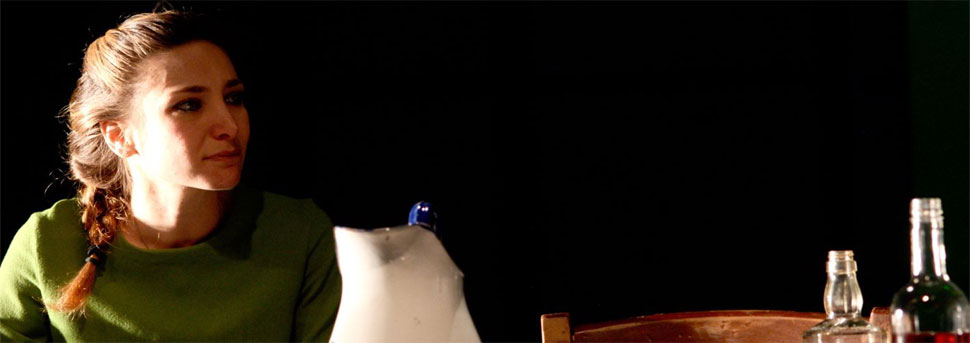by Linda Dalisi
director assistant Linda Dalisi
director Antonio Latella
characters and interpreters
Chrysothemis Giuliana Vigogna
Clytemnestra Ilaria Matilde Vigna
Agamemnon Leonardo Lidi
Elettra Marta Cortellazzo Wiel
Oreste Christian La Rosa
Iphigenia Federica Rosellini
Pilade Andrea Sorrentino
Tantalum and Plistene Alessandro Bay Rossi and Isacco Venturini
Menelaus Ludovico Fedegni
Helen Barbara Chichiarelli
Apollo Gianpaolo Pasqualino
Women choir Mariasilvia Greco and Barbara Mattavelli
Aegisthus Emanuele Turetta
Achilles Alexis Aliosha Massine
project playwrights Federico Bellini and Linda Dalisi
production Emilia Romagna Teatro Fondazione
with the support of Fondazione Cassa di Risparmio di Modena
Duration 1h
Played in Italian with english subtitles
in the frame of the project “At the Prospero’s School. Actors in the global net”
![]()
Chrysothemis
Chrysothemis is the daughter of Agamemnon and Clytemnestra and therefore belongs to the lineage of Atreus, along with Iphigenia, Electra and Orestes. Strangely enough, tragedians of the fifth century gave her a second thought, if not as a counterpoint to the avenging fury of Electra (though she had already been mentioned by Homer). She would have to wait until the year 900 when she became the central figure in a poem by Ritsos, whose text focused on the absence of action and on the sense of silent political assistance to events.
We then worked on the absence of this character from the “Saga of Atreus”, on the sense of a tragedy based on a non-being, a character who has gathered mold in waiting over the course of centuries for an author to bring her back to her time. However, it is her distance from Tantalus’ blood curse that abates the descent, making her a hypothetical “survivor”, a kind of witness to the events, one who will describe them. For this name, Chrysothemis, I imagined a kind of redemption, a text that made her a tragic heroine, even at the cost of changing history by moving the balance with respect to how it was told. However, considering the fact that it is still the last of eight texts, coming after everything has already been told, the text became a Final Act without words, a long sequence of characters in a reunion suspended in the afterlife. In the words entrusted to record a voice coming from another time, the silence was broken only by the sound of the dishes of a great banquet and a final toast. To give voice to the last of Agamemnon’s children, then, this large painting has found the words and a body that would create the scene.
The etymology of the name Chrysothemis is the theme of the law, the order of things, and that of gold and splendor, as if she enshrined the glorious destiny of a law of the common man’s life. Another tragedy? To what extent?
This order of things, this “golden rule”, has also become a key to the composition of a text which enclose fragments of previous texts, arranging them in a helical pattern to sound like a repetition of the same day towards the great and final family reunion, which is our common fate. We created a language and a poetry with Antonio Latella that is decidedly twentieth century, the last piece of the dramaturgical puzzle. The inspiration came largely from Samuel Beckett in style of prose, Simone Weil for the poetry, and Angelopoulos to retrace the historical-political flavor of the acting that he has given to his version of The Oresteia.
Chrysothemis remains locked in a closet. It is an image that comes from Anna Maria Ortese who in a letter defined a poet as “a closed dragon in a closet”, for being reclusive prophet of his time. Looking out into the world from there and watching the events, the departures, the war, was perhaps the most heroic act that Chrysothemis could do. It is when one hears the vibrations of destiny in the sounds of her loved ones – immobilized on a tape – that memories are made.
It is the tragic sense impressed on the memory that becomes central. It reminds me that studying the past offers live material for the creative processes of the present and school is the cradle of this possibility, now a victim of a criminal havoc that gradually would mutilate the ancient world. Living material, vital, forever young, waiting for centuries to be discovered.
Linda Dalisi


